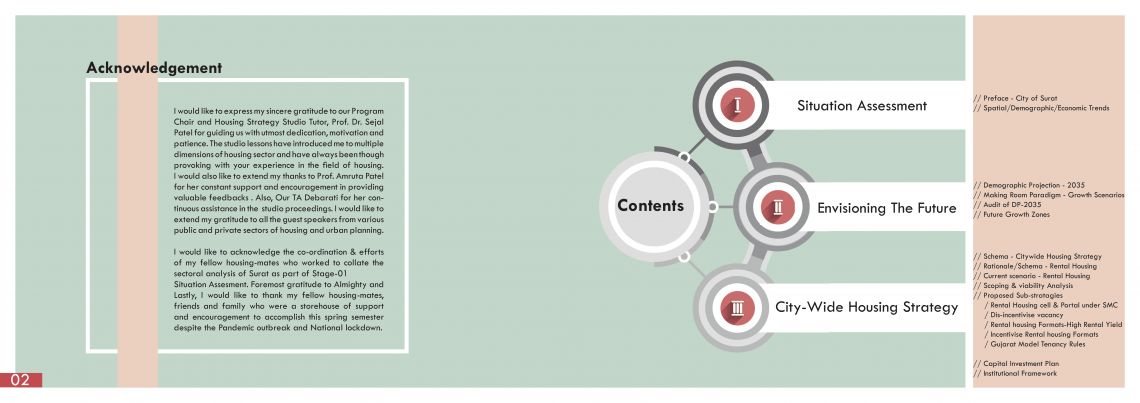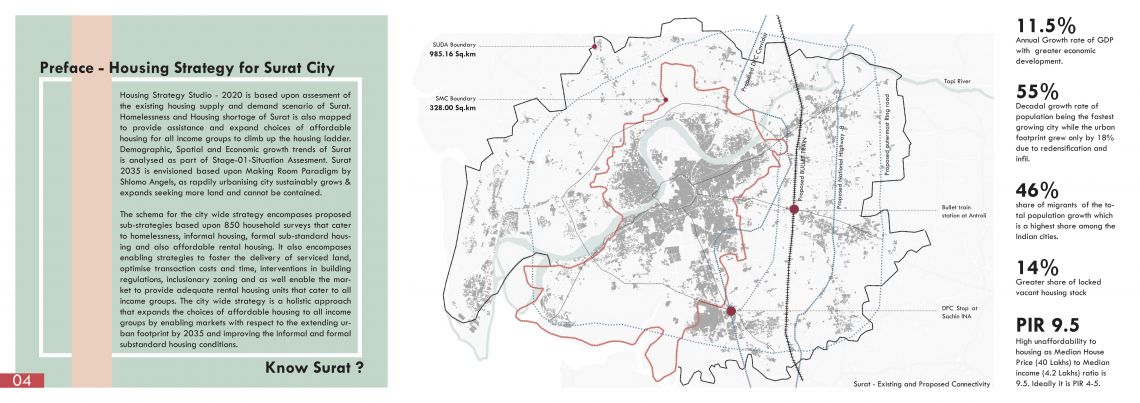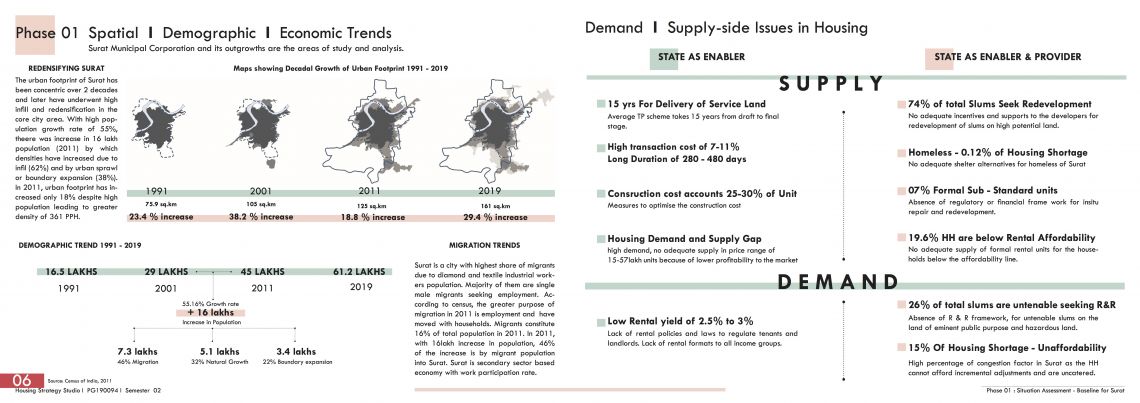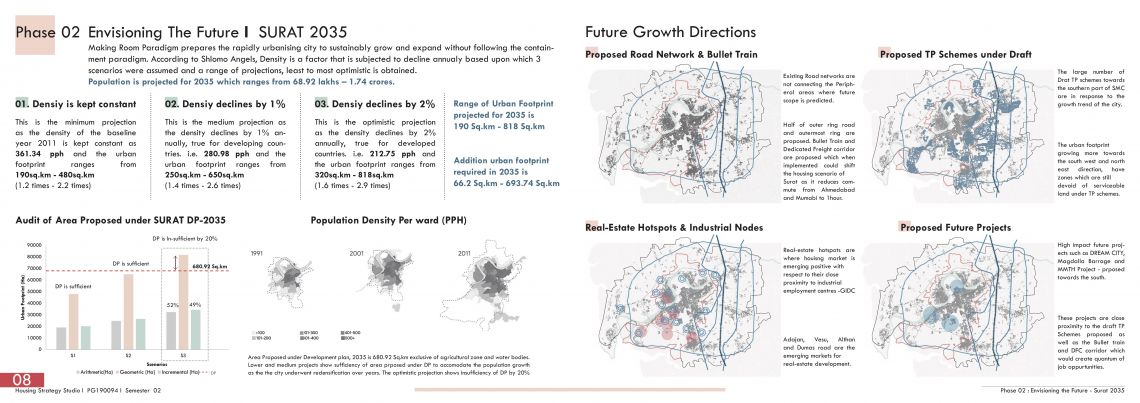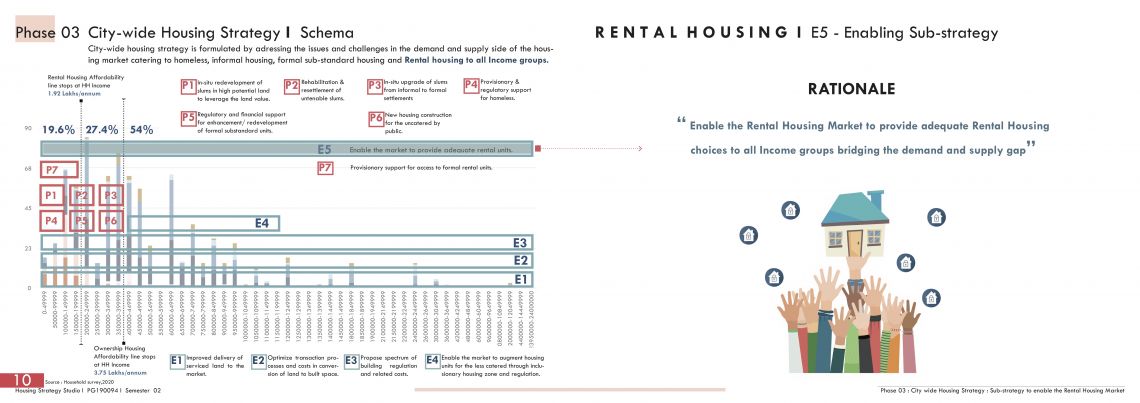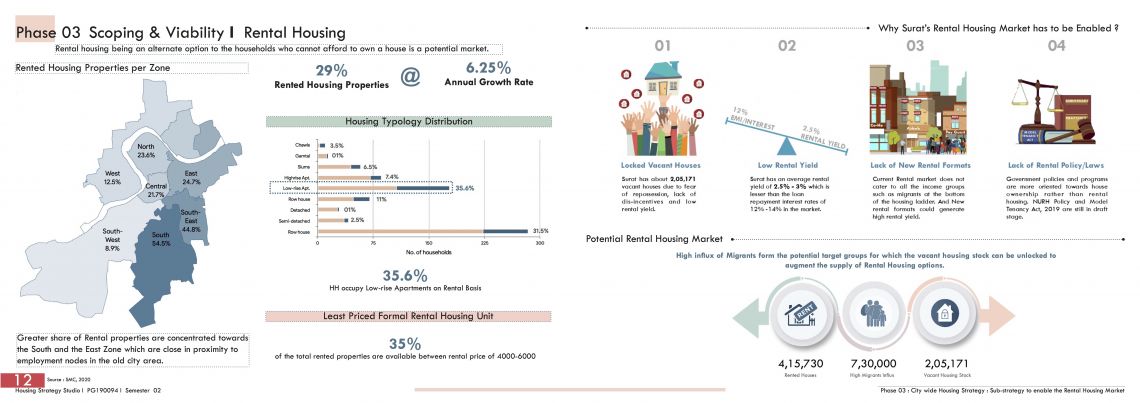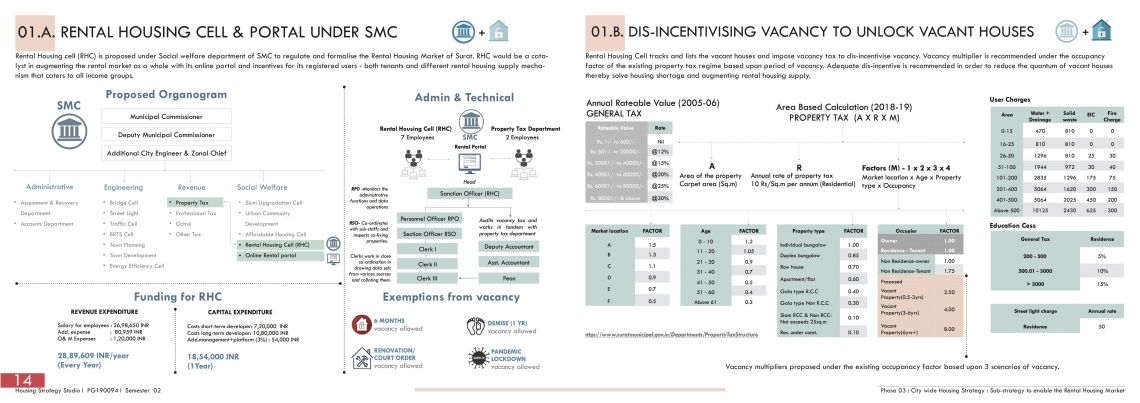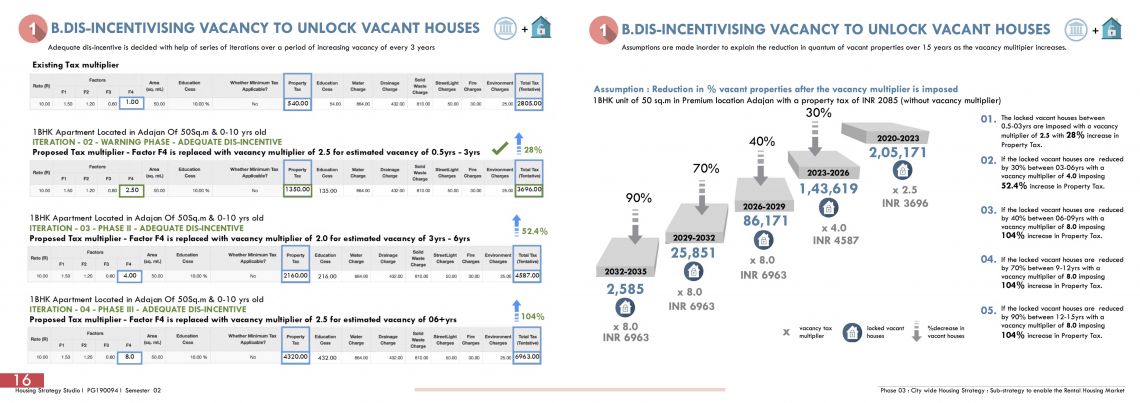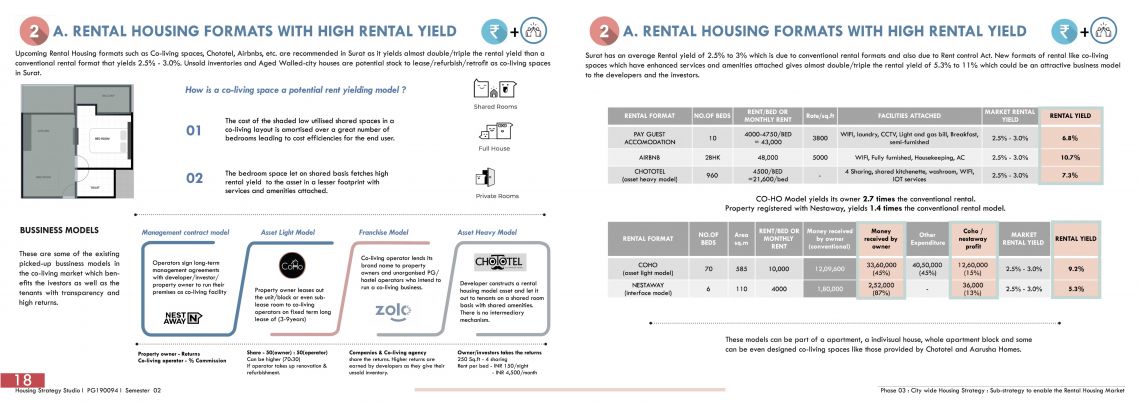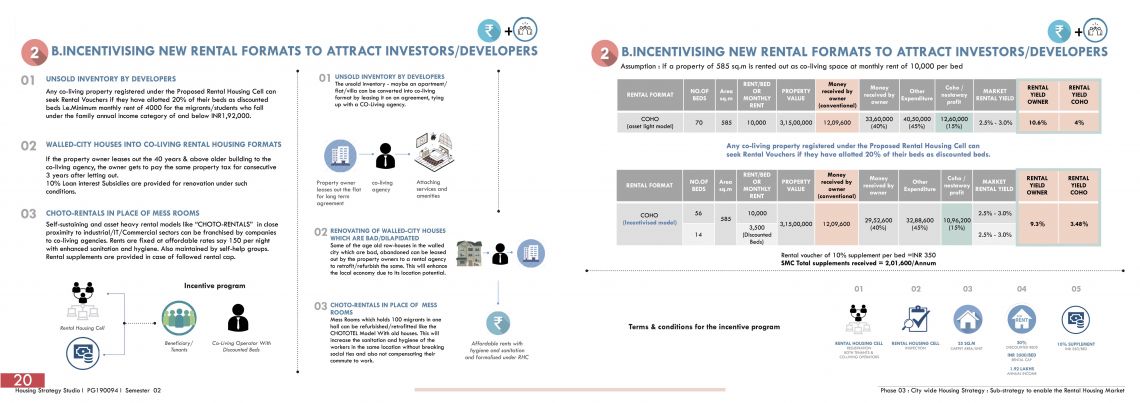Your browser is out-of-date!
For a richer surfing experience on our website, please update your browser. Update my browser now!
For a richer surfing experience on our website, please update your browser. Update my browser now!
Rental housing has been a much passed over subject in the context of housing in India. Historically, the Indian housing policies have been directed towards homeownership which alone cannot solve the housing conundrum. Zero or no policy interventions for rental housing have been a big deterrent for the creation of rental housing stock in the country (Frank, 2019). The sub-strategy is enabling the rental market to provide adequate rental units across all income groups. Rent control law, Urban Rental Housing Policy, 2015 (Draft), and Model Tenancy Act, 2019 (Draft) are reviewed to understand the backbone authorities to enable the rental market. Three sub-strategies are proposed to enable the locked vacant housing stock as well as enable the unsold inventories by the developers by incentivizing them. Rental Housing cell (RHC) is proposed under the Social welfare department of SMC to regulate and formalize the Rental Housing Market of Surat. RHC would be a catalyst in augmenting the rental market as a whole with its online portal and incentives for its registered users - both tenants and different rental housing supply mechanism that caters to all income groups. Rental Housing Cell tracks and lists the vacant houses and impose vacancy tax to dis-incentivize vacancy. The vacancy multiplier is recommended under the occupancy factor of the existing property tax regime based upon a period of vacancy. Adequate dis-incentive is recommended in order to reduce the quantum of vacant houses thereby solve the housing shortage and augmenting rental housing supply. Upcoming Rental Housing formats such as Co-living spaces, Chototel, Airbnbs, etc. are recommended in Surat as it yields almost double/triple the rental yield than a conventional rental format that yields 2.5% - 3.0%. Unsold inventories and Aged Walled-city houses are potential stock to lease/refurbish/retro t as co-living spaces in Surat. Rental Housing Cell intervenes between the co-living rental housing formats and the tenants to incentivize both the registered users. 20% Beds at least rental prices are allocated as part of their premises to avail vouchers from RHC. This helps in balancing the affordability of both the supply mechanism and the low-income tents with Local Body Intervention. With regulatory authority and disincentives for the vacancy, added with an incentive for discounted bed providers of co-living agencies, the rental housing sector of Surat can be enabled to meet Surat 2035’s demand and population growth.
